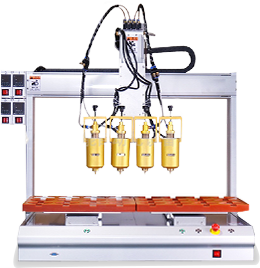

Ferrous metal sheet stampings are industrial parts made of iron and its alloys (such as carbon steel, alloy steel, cast iron, etc.) through stamping process. Driven by a powerful press and equipped with high-precision molds, ferrous metal sheets undergo plastic deformation or separation, and are given precise shapes and sizes. They are widely used in machinery manufacturing, automotive industry, construction equipment, energy equipment and other fields.
.Good weldability: Most ferrous metal stamping parts have good weldability, which is convenient for welding and assembly with other parts to form complex structures. In the fields of building steel structures, bridge construction, etc., stamping parts can be quickly and firmly connected through welding technology to improve construction efficiency.
Features Dimensions | Specific benefits | Application scenarios |
High strength and toughness | Tensile strength 450-600MPa, able to withstand high strength loads | Automobile chassis, heavy machinery |
Good wear resistance | After treatment, the wear resistance is significantly improved | Mining machinery, agricultural machinery |
Cost advantage | Low raw material prices and mature production technology | Cost-sensitive industrial sectors |
Good solderability | Easy to weld and assemble | Building steel structure, bridge construction |
(I) Processing technology
The stamping process of ferrous metal sheets is mainly divided into two categories: separation and forming. The separation process includes blanking, punching, trimming, etc., using the die edge to separate the sheet to obtain the required blank shape; the forming process includes bending, drawing, flanging, etc., using the die to make the sheet plastically deformed to produce complex-shaped parts such as automobile body covers and equipment shells. In the production process, according to product requirements, CNC technology and automated production lines can be combined to achieve high-precision, mass production to ensure stable product quality.
(II) Applicable materials
. Carbon steel: Low carbon steel has good plasticity and is easy to process and form. It is often used to manufacture automotive interior parts and electrical housings; medium carbon steel has moderate strength and toughness, and is suitable for manufacturing mechanical parts and automobile chassis parts; high carbon steel has high hardness and can be used to manufacture wear-resistant parts.
. Alloy steel: By adding alloy elements such as chromium, manganese, and nickel, alloy steel stampings have special properties. For example, stainless steel stampings are corrosion-resistant and are often used in food machinery and medical equipment; manganese steel stampings are high-strength and wear-resistant, and are suitable for mining equipment.
. Cast iron: Gray cast iron stampings have good shock absorption performance and are mostly used for machine tool beds; ductile iron stampings have excellent comprehensive performance and can be used to manufacture important parts such as engine crankshafts.
(III) Quality inspection
Quality inspection runs through the entire production process. Appearance inspection uses a combination of manual visual inspection and AI visual inspection to check whether there are cracks, scratches, and deformations on the surface; Dimension inspection uses calipers, micrometers, and three-coordinate measuring instruments to ensure that dimensional accuracy meets tolerance requirements; performance inspection uses tensile tests, hardness tests, impact tests, etc. to test the tensile strength, hardness, toughness and other indicators of the product to ensure that the quality of ferrous metal sheet stampings is reliable and meets customer needs.
 Headquarters tel.
Headquarters tel. E-mail.
E-mail.